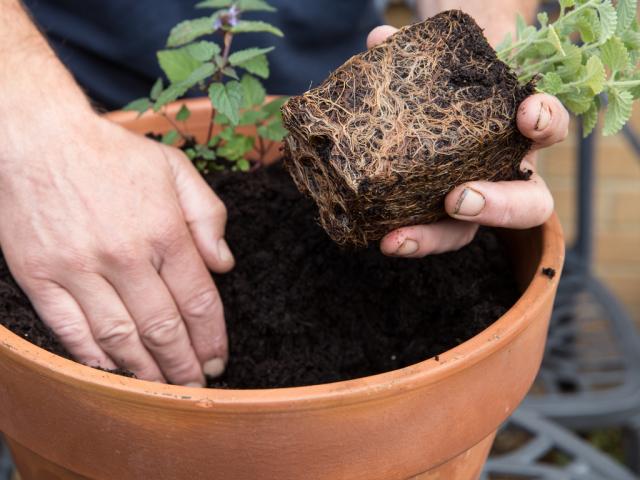Nick Mann, founder of Habitat Aid, explains why the plants he sells are never grown in peat and why you should go peat-free in your garden.
Peat based compost has been used since the mid 1900s. Gardeners love it. It’s high in nutrients, holds water and improves soil structure. Multi-purpose composts can have over 75% peat content because of its fabled properties. So why shouldn’t we use it?
Gardeners account for 60% of all the peat bought in the UK, amounting to 3 billion litres every year. Amazingly, I discover you can still buy peat cut in the Somerset Levels, just down the road from Habitat Aid’s HQ.

I am amazed because peat as a resource is the antithesis of sustainable. Sphagnum peat is formed at a miniscule 1mm each year – that doesn’t amount to 3 billion litres.
In years gone by peat was a massive business down here in the West Country. The peat cutters were partly paid in cider, which anaesthetised them from their back breaking work.

The peat sold to gardeners today is extracted from bogs using highly efficient machinery that can destroy hundreds of years' worth of growth in just a few months. A pint of scrumpy cannot hide the fact that 80% of British peatland is already damaged.
Who cares about peat? We all ought to. Peat bogs absorb vast amounts of rainwater, providing a natural flood defence for nearby towns and villages. The plants in a bog store carbon dioxide more effectively than a forest – they are fighting global warming for us by holding millions of tons of greenhouse gas emissions underground. This is why the Committee on Climate Change describes giving up peat based compost as one of the best things we can do to fight climate breakdown.

Peatland provides a unique habitat for bog-loving plants and animals too. Two butterflies and at least 100 moths are under direct threat from peatland loss in the Scottish lowlands, which is why Butterfly Conservation enlisted me to help persuade more gardeners to go peat-free.
We can all do our bit to save this super-endangered bogland habitat.
I haven’t used a peat based compost in the garden for a while and wonder why I ever did. I buy a local brand, similar to others available nationally, which contains coir and/or composted bark.

I make sure that professionally I only buy plants from nurseries which don’t use peat. I was taught a lesson by a couple of our suppliers, who dropped it some years ago. They now use coir based products, which seem to work at least as well. You might argue about the green credentials of something shipped halfway around the world, but that’s another story!
In fairness, viable alternatives have only recently become available. When studying the bag to make sure your compost doesn’t contain peat, check that it is PAS100 certified. This accreditation from the Compost Certification Scheme (CCS) guarantees that the organic materials used are safe for humans, animals and plants.
Find out more about what you can do to save our bogs.
Sign up to be a soil warrior



